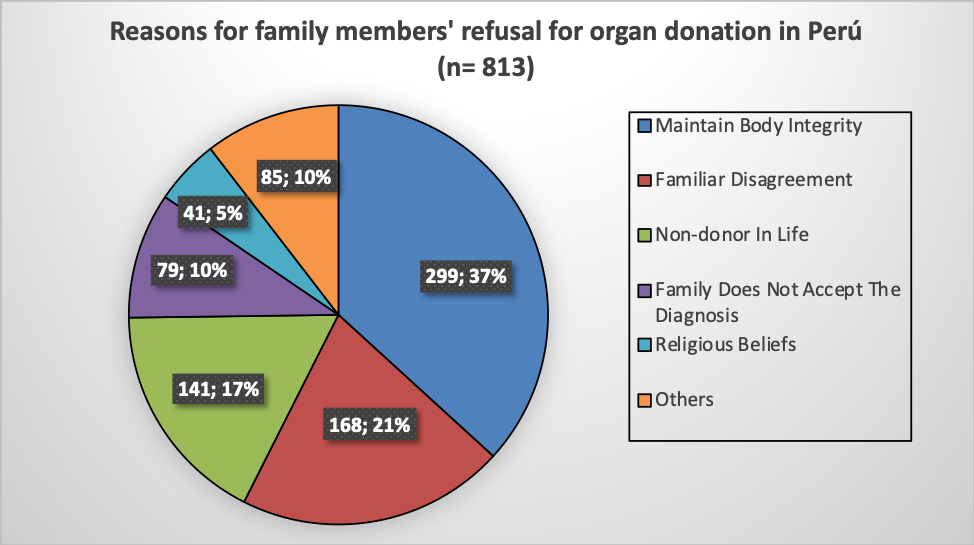Organ Donation in Perú: Why are We Failing? Conclusions from the Last 5 Years
Instituto Nacional de Salud del Niño de San Borja, Lima, Peru
Meeting: 2020 American Transplant Congress
Abstract number: C-251
Keywords: Allocation
Session Information
Session Name: Poster Session C: Non-Organ Specific: Public Policy & Allocation
Session Type: Poster Session
Date: Saturday, May 30, 2020
Session Time: 3:15pm-4:00pm
 Presentation Time: 3:30pm-4:00pm
Presentation Time: 3:30pm-4:00pm
Location: Virtual
*Purpose: The scarcity of deceased donor organs is still an unmet need in transplantation worldwide. This dilemma is significantly important in several Latin American nations. Disappointingly, by the end of 2018, the donation rate in Perú was only 2 donors per million population (pmp), which is significantly lower when compared to Spain (48 pmp) or the United States (33 pmp). Studies suggest that factors like cultural/religious concerns, misinformation, inadequate approach from health-care professionals regarding donation and absence of knowledge of the patient’s wishes are associated with low donation rates. The aim of the study was to identify the main causes of lack of donation over the country.
*Methods: This was a retrospective, cross sectional, observational study from 01/2013 to 12/2018. Data was obtained from the Peruvian Organ Procurement Organization (Dirección General de Donación de Órganos y Tejidos, DIGDOT) medical records (n=4963).
*Results: A total of 4864 potential donors met our inclusion criteria for analyses; most were male (66.9%, 3255) with a mean age of 39.3 ± 17.1 years and 51.4% (2501) lived in the capital city (Lima). Of them, 30.4% (1479) progressed to brain death (certified by a physician in all cases). The main cause of death among these patients was hemorrhagic stroke (46.6%, 690) followed by trauma (40.3%, 597). Official assessment by the DIGDOT personnel in order to obtain donation consent was performed in 79.7% of the cases (1179). Only 26,1% (308) accepted and signed consent for organ donation. Family members’ refusal was the most common cause for not performing organ donation (68.9%, 813). The main reason for family members’ refusal was to maintain patient’s body integrity (36.7%, 299) followed by familiar disagreement (20.6%, 168).
*Conclusions: National emphasis should be given to implement new strategies (based on the socio-cultural characteristics of the Peruvian population) in order to promote organ donation and fulfill the requirements of the wait-list transplant candidates. There is an imminent need for public educational campaigns, not only for raising awareness for organ donation, but also for communicating the decision to the family. We believe that these approaches may improve the authorization rate for organ donation in Perú.
To cite this abstract in AMA style:
Gonzales MMoreno, Duran J, Ponce O, Navarro G, Benavides M. Organ Donation in Perú: Why are We Failing? Conclusions from the Last 5 Years [abstract]. Am J Transplant. 2020; 20 (suppl 3). https://atcmeetingabstracts.com/abstract/organ-donation-in-peru-why-are-we-failing-conclusions-from-the-last-5-years/. Accessed December 14, 2025.« Back to 2020 American Transplant Congress

